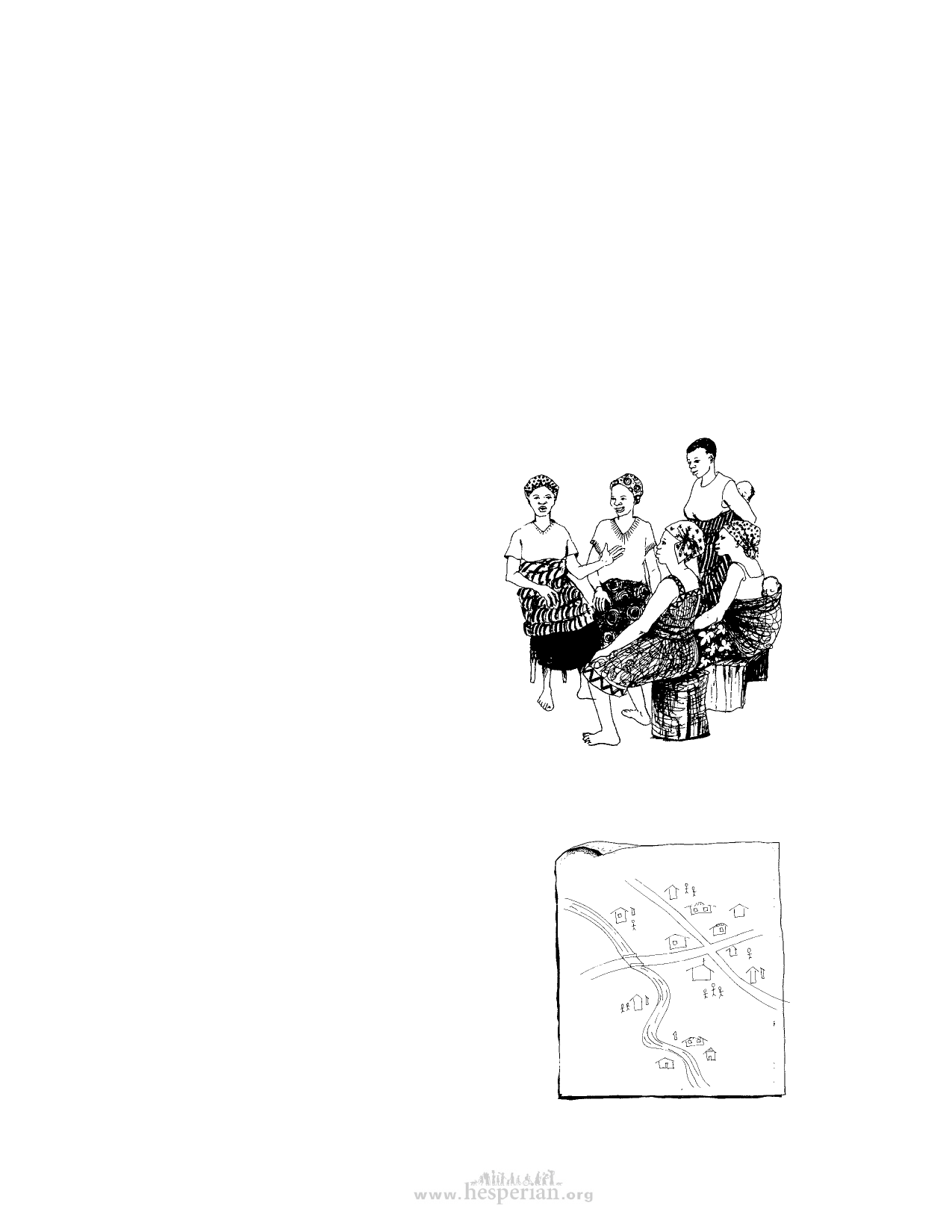
Water for Life 17
A Water Watch to assess community water security
A Water Watch activity can help a group choose the best sources of safe drinking
water. It can also help find sources of contamination now, or possible problems in the
future.
A Water Watch activity can be a long process that involves the whole community
and includes many of the steps in planning a water project, or it can be a shorter
process done by a small group responsible for community water safety and supply.
The most important thing is to listen closely to the whole community, especially those
who collect and treat water every day.
How to do a Water Watch activity
1. Talk to people who use and care for the water
Is there a person or group in the community responsible for wells, pipes, or other
water supply systems? Is there a person or group responsible for sanitation? Which
people or groups most often
collect, carry, treat, and store the
water? These people or groups
should be involved in the Water
Watch and in any improvements
to water sources.
Together with the people
responsible for the water, list all
the water sources in the area.
Note what people say about
drinking water quality and
quantity. Note the work it takes
to collect water and ensure that
it is safe, and how much time
people spend doing this work.
You can ask questions like:
How much water is used every
day? Are different sources used for drinking, cooking, bathing, watering livestock,
farming, and other needs? Is there enough water for all these needs? Is there a water
source or any water storage for emergencies?
2. Make a map of local water sources
and sources of contamination
A map of the community can show
where the water sources are in relation
to people’s homes and to sources of
contamination. A map should also
show important landmarks such
as roads, paths, houses and other
buildings, farms, fields, toilets and
sewer lines, and dumping sites.
Community map